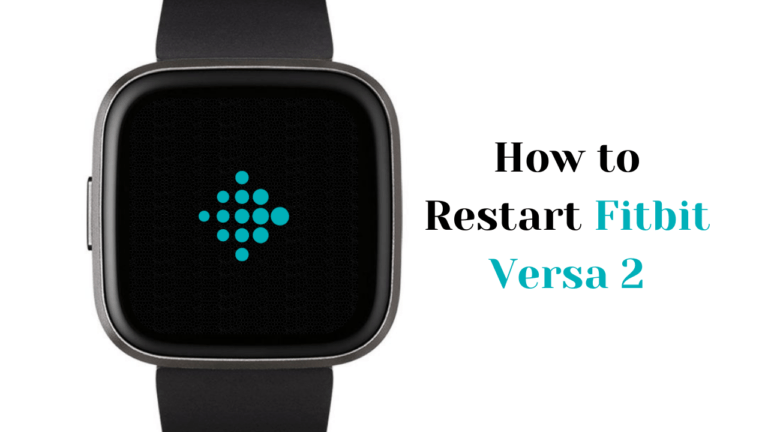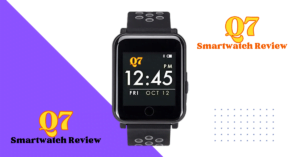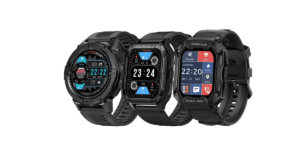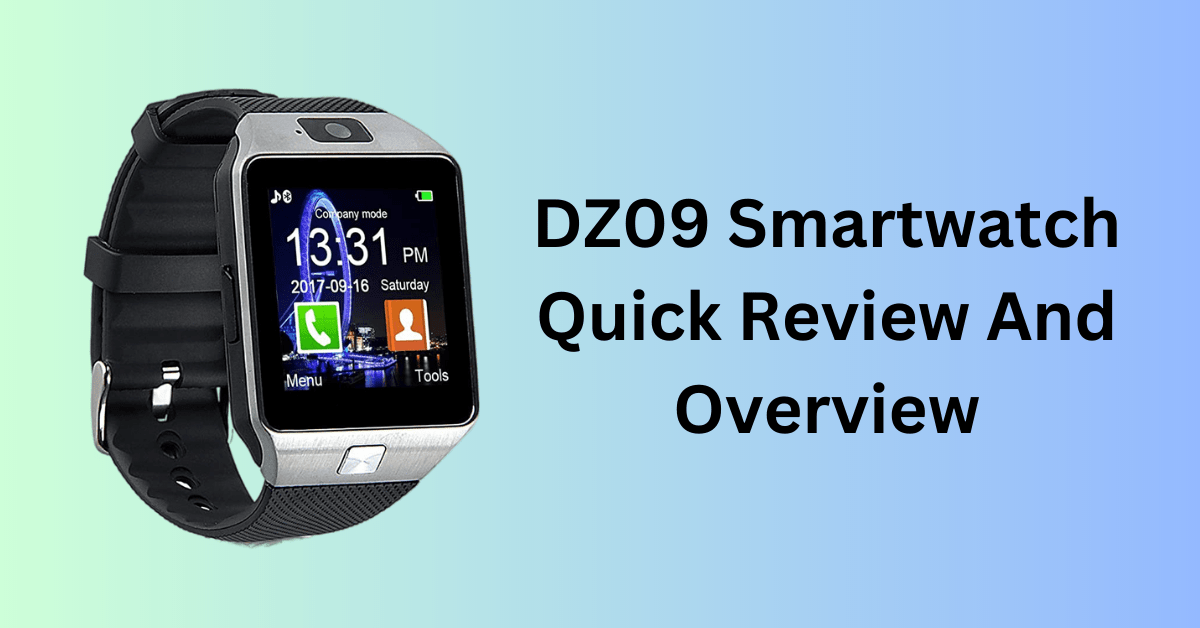Last Updated on November 9, 2023 by Kian
Fitbit is a popular wearable device that tracks various aspects of your daily activity, including the number of steps taken, the distance traveled, and the calories burned. While most people are familiar with the basic functions of a Fitbit device, many are still curious about how does Fitbit calculate calories burned. In this article, we’ll dive deep into the mechanisms that Fitbit uses to calculate calories burned and help you understand how it works.
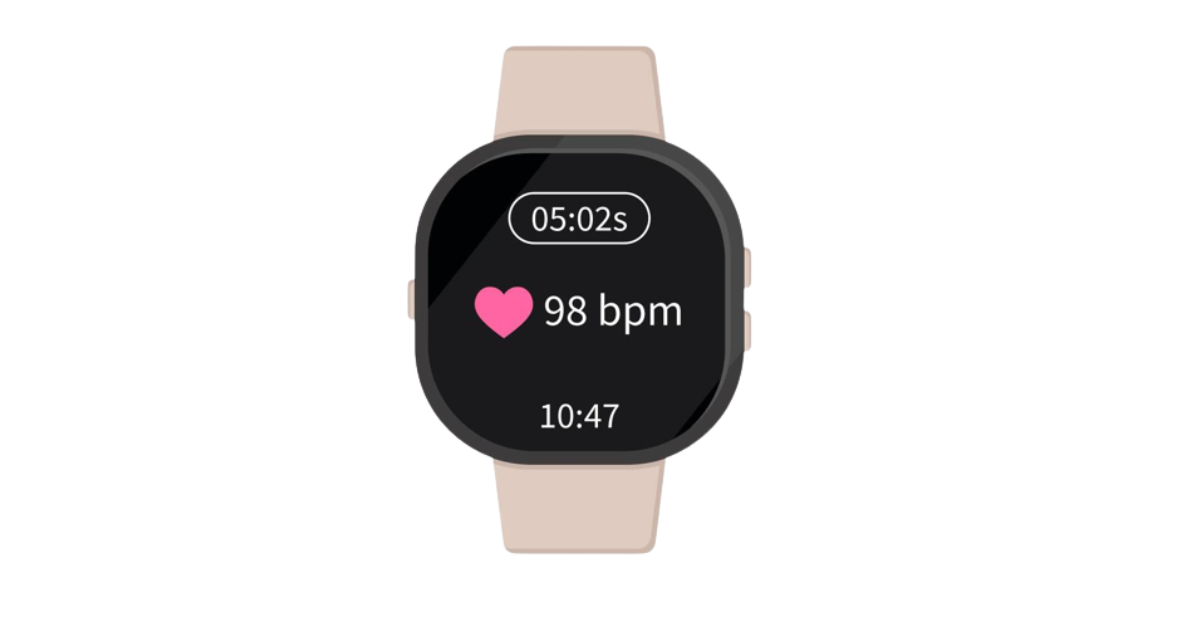
What Are Calories?
Before we dive into how Fitbit calculates calories burned, it’s essential to understand what calories are. Calories are a measure of energy, and they are used to quantify the amount of energy in food and the amount of energy expended by the body. The human body requires energy to perform essential functions such as breathing, circulating blood, and regulating body temperature. The energy required to perform these functions is known as the basal metabolic rate (BMR).
How Does Fitbit Calculate Calories Burned?
Fitbit devices use a combination of data points to calculate the number of calories burned, including BMR, activity data, and heart rate data. BMR is the amount of energy the body requires to perform basic functions at rest, and it accounts for at least half of the total calories burned in a day. To calculate BMR, Fitbit uses the following information that you enter into your account:
- Height
- Weight
- Sex
- Age
Once Fitbit has calculated your BMR, it combines this number with activity data and heart rate data to estimate the number of calories burned throughout the day.
Activity Data
Fitbit devices track your activity throughout the day, including the number of steps taken, distance traveled, and the intensity of the activity. The device uses this data to estimate the number of calories burned during physical activity.
For example, if you go for a run, your Fitbit device will use the number of steps taken, distance traveled, and heart rate data to estimate the number of calories burned during the run. The device will also use the activity data from other parts of your day, such as walking around the office or doing household chores, to calculate your total calorie burn for the day.
Heart Rate Data
Some Fitbit devices, such as the Charge 5, have built-in heart rate monitors that track your heart rate throughout the day. This data is used to estimate the number of calories burned during exercise and to determine the intensity of the activity.
For example, if you go for a run, your Fitbit device will use your heart rate data to determine the intensity of the exercise. The device will then use this information to estimate the number of calories burned during the run.
Source of Information: https://help.fitbit.com/articles/en_US/Help_article/1141.htm
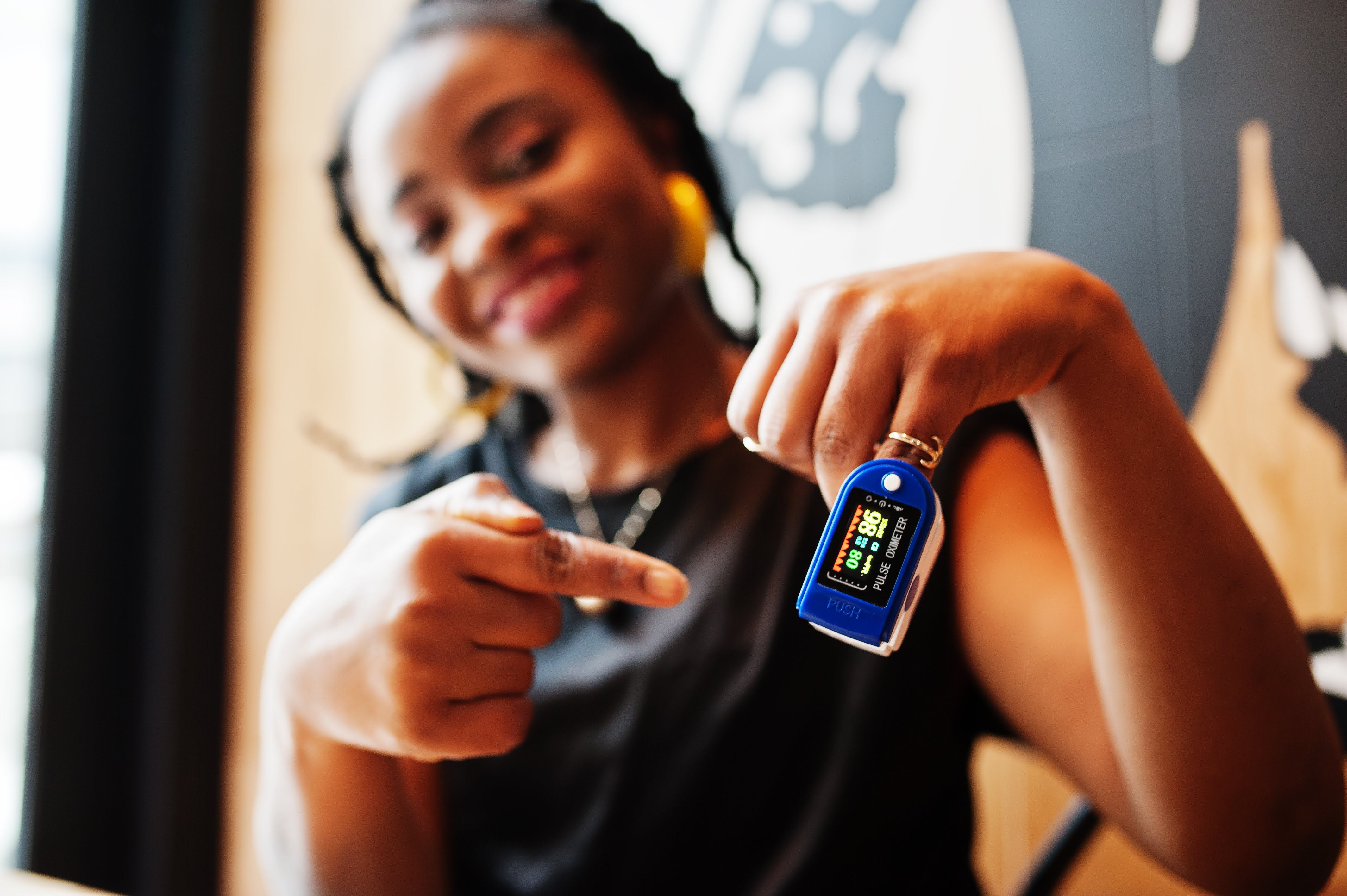
How Accurate Are Fitbit Calorie Burn Estimates?
The accuracy of Fitbit calorie burn estimates can vary depending on several factors, including the device being used and the individual’s physiology. Fitbit devices that have built-in heart rate monitors tend to be more accurate than those without.
Research has shown that Fitbit devices with built-in heart rate monitors can estimate calorie burn with 10% accuracy compared to laboratory-grade measurements. However, devices without heart rate monitors may have a margin of error of up to 25% when estimating calorie burn.
Other factors that can impact the accuracy of Fitbit calorie burn estimates include:
- The type of activity being performed
- The individual’s weight and body composition
- The individual’s age and sex
- Environmental factors such as temperature and altitude
It’s important to note that while Fitbit devices may not be 100% accurate when it comes to calorie burn estimates, they can still provide valuable information about your daily activity and help you track your progress toward your fitness goals.
Also Read: What Is BPM In Smartwatch
Factors that affect the accuracy of Fitbit’s calorie calculation
While Fitbit’s algorithm is accurate, there are several factors that can affect the accuracy of the calorie calculation. These factors include:
- Individual differences – Every individual is different, and their metabolic rate and energy expenditure can vary significantly. Fitbit’s algorithm takes into account the weight, height, age, and gender of an individual, but there are other factors that can affect the accuracy of the calculation.
- Exercise intensity – The intensity of the exercise plays a significant role in determining the number of calories burned. Fitbit’s algorithm uses the MET concept to determine the intensity of the exercise, but the actual intensity of the exercise can vary from person to person.
- Environmental factors – The environment in which the exercise is performed can also affect the accuracy of the calorie calculation. Factors such as temperature, humidity, and altitude can affect the energy expenditure of an individual.
- Type of exercise – The type of exercise also plays a significant role in determining the number of calories burned. Different types of exercises have different MET values, and the algorithm uses these values to calculate the number of calories burned.
- Heart rate accuracy – The accuracy of the heart rate monitor can also affect the accuracy of the calorie calculation. If the heart rate monitor is not functioning correctly, it can affect the accuracy of the calorie calculation, as it is a key component in determining the intensity of the exercise.

Tips to improve the accuracy of Fitbit’s calorie calculation
While there are several factors that can affect the accuracy of Fitbit’s calorie calculation, there are also several tips that individuals can follow to improve the accuracy of the calculation. These tips include:
- Ensure that the Fitbit is properly calibrated – It is important to ensure that the Fitbit is properly calibrated, as this can affect the accuracy of the calorie calculation. Calibration ensures that the sensors and algorithms are functioning correctly.
- Input accurate personal data – It is important to input accurate personal data, including weight, height, age, and gender, as this information is used in the calorie calculation.
- Wear the Fitbit correctly – It is important to wear the Fitbit correctly, as this can affect the accuracy of the heart rate monitor. The Fitbit should be worn snugly, but not too tight.
- Monitor heart rate during exercise – Monitoring heart rate during exercise can help improve the accuracy of the calorie calculation. If the heart rate monitor is not functioning correctly, the calorie calculation may not be accurate.
- Use multiple sensors – Using multiple sensors, such as a chest strap heart rate monitor, can improve the accuracy of the calorie calculation. This is especially useful for individuals who engage in high-intensity exercise.
FAQs on How Does Fitbit Calculate Calories Burned
Does Fitbit count calories burned accurately?
The accuracy of Fitbit’s calorie burn estimates has been a subject of debate among researchers and fitness enthusiasts. While the device’s calorie estimates are not perfect, they are generally considered to be reliable for tracking daily activity and providing users with a rough idea of their caloric expenditure.
Fitbit devices use a combination of factors, including BMR, activity data, and heart rate data, to estimate the number of calories burned in a day. BMR, which is calculated based on an individual’s height, weight, sex, and age, accounts for at least half of the total calories burned in a day. Activity data, such as steps taken and distance traveled, is used to estimate the number of calories burned during physical activity. Heart rate data is used to determine the intensity of the activity and estimate the number of calories burned during exercise.
Studies have shown that Fitbit devices with built-in heart rate monitors can estimate calorie burn with an accuracy of within 10% compared to laboratory-grade measurements. However, the accuracy of calorie burn estimates can be affected by a variety of factors, such as the device’s placement on the body, the type of activity being performed, and individual physiological differences.
One study published in the Journal of Sports Sciences found that Fitbit devices tended to overestimate calorie burn during high-intensity activities and underestimate calorie burn during low-intensity activities. The study also found that the accuracy of calorie estimates varied depending on the type of activity, with greater accuracy observed during walking and running compared to cycling and resistance training.
Another study published in the Journal of Medical Internet Research found that Fitbit devices tended to overestimate calorie burn during periods of rest and underestimate calorie burn during periods of exercise. The study also found that the accuracy of calorie estimates was affected by individual differences in body composition, such as muscle mass and body fat percentage.
Overall, while Fitbit’s calorie burn estimates may not be 100% accurate, they can still provide valuable information for users looking to track their daily activity and optimize their fitness routine. Users should keep in mind that the accuracy of calorie estimates can be affected by various factors and use the data provided by their device as a rough guide rather than an exact measurement.
How does Fitbit know how many calories I burn?
Fitbit uses a combination of factors to estimate the number of calories an individual burns in a day. These factors include basal metabolic rate (BMR), activity data, and heart rate data.
BMR is the number of calories an individual burns at rest to maintain vital body functions such as breathing, blood circulation, and heartbeat. Fitbit calculates an individual’s BMR based on their height, weight, sex, and age. This is why the user is asked to input their physical data when they set up their Fitbit account.
Activity data is also used to estimate the number of calories an individual burns during physical activity. This includes data such as steps taken, distance traveled, and floors climbed. Fitbit devices track this data using an accelerometer, which measures the device’s movement and translates it into activity data.
Heart rate data is used to determine the intensity of an individual’s physical activity and estimate the number of calories burned during exercise. Fitbit devices with built-in heart rate monitor use this data to provide more accurate estimates of calorie burn during exercise.
The device combines these factors to estimate the number of calories burned in a day. This data is then displayed on the device’s screen and in the Fitbit app, allowing users to track their daily activity and caloric expenditure.
It’s important to note that while Fitbit’s calorie burn estimates can provide valuable information for individuals looking to track their fitness progress, they may not be 100% accurate. Factors such as the device’s placement on the body, individual physiological differences, and the type of activity being performed can affect the accuracy of calorie estimates. Nonetheless, Fitbit devices remain a popular tool for tracking daily activity and calories burned.
Why does Fitbit show high calories burned?
Fitbit devices estimate the number of calories burned based on a combination of factors, including basal metabolic rate (BMR), activity data, and heart rate data. While Fitbit’s calorie burn estimates can provide useful information for individuals looking to track their fitness progress, there are several reasons why the device may show higher-than-expected calorie burn.
Firstly, the device’s placement on the body can affect the accuracy of calorie estimates. For example, wearing the device too loosely or too tightly can affect the readings. The device should be worn snugly on the wrist for the most accurate results.
Secondly, individual differences in physiology can affect the accuracy of calorie estimates. For example, individuals with higher muscle mass tend to burn more calories during physical activity than those with lower muscle mass. Additionally, factors such as genetics, age, and sex can affect an individual’s metabolic rate and the number of calories they burn in a day.
Thirdly, Fitbit’s calorie burn estimates may be influenced by the type of activity being performed. For example, high-intensity activities such as running and cycling tend to burn more calories than low-intensity activities such as walking. If an individual performs a high-intensity activity, their calorie burn estimate may be higher than expected.
Lastly, Fitbit devices may sometimes overestimate calorie burn during periods of rest, such as when an individual is sleeping or sitting still. This is because the device’s algorithms are based on average values for BMR and may not accurately reflect an individual’s unique metabolic rate.
Overall, while Fitbit’s calorie burn estimates may not be 100% accurate, they can still provide valuable information for individuals looking to track their daily activity and caloric expenditure. Users should keep in mind that the accuracy of calorie estimates can be affected by various factors and use the data provided by their device as a rough guide rather than an exact measurement.
How does Fitbit calculate calories burned during sleep?
Fitbit devices use a combination of factors to estimate the number of calories burned during sleep, including basal metabolic rate (BMR) and heart rate data.
During sleep, an individual’s BMR is the primary source of caloric expenditure. BMR is the number of calories an individual burns at rest to maintain vital body functions such as breathing, blood circulation, and heartbeat. Fitbit calculates an individual’s BMR based on their height, weight, sex, and age, and uses this value to estimate the number of calories burned during sleep.
In addition to BMR, Fitbit devices with built-in heart rate monitors use heart rate data to provide a more accurate estimate of calorie burn during sleep. The device tracks heart rate variability throughout the night, which can indicate the different stages of sleep (such as deep sleep and REM sleep). Based on this data, the device can estimate the number of calories burned during each stage of sleep.
Fitbit’s algorithm takes into account an individual’s unique heart rate variability patterns, which can vary based on factors such as age, sex, and fitness level. This allows the device to provide more accurate estimates of calorie burn during sleep compared to devices that do not use heart rate data.
It’s important to note that while Fitbit’s calorie burn estimates during sleep can provide valuable information for individuals looking to track their daily caloric expenditure, they may not be 100% accurate. Factors such as the device’s placement on the body, individual physiological differences, and the type of sleep being performed can affect the accuracy of calorie estimates. Nonetheless, Fitbit devices remain a popular tool for tracking daily activity and caloric expenditure, including during sleep.
Why does my Fitbit show calories burned when I haven’t done anything?
It’s common for Fitbit devices to show a certain number of calories burned even when an individual has not engaged in any physical activity. This is because the device takes into account basal metabolic rate (BMR), which is the number of calories an individual burns at rest to maintain vital body functions such as breathing, blood circulation, and heartbeat.
BMR accounts for a significant portion of an individual’s daily caloric expenditure, even when they are not engaged in physical activity. As a result, the number of calories burned displayed on the device will include this baseline value, regardless of whether the individual has been active or not.
Additionally, some Fitbit devices may also track an individual’s movements throughout the day, including fidgeting and small movements. While these movements may not be enough to qualify as physical activity, they can still contribute to an individual’s total daily caloric expenditure and may be reflected in the device’s calorie burn estimates.
It’s important to note that while Fitbit’s calorie burn estimates can provide useful information for individuals looking to track their daily activity and caloric expenditure, they may not be 100% accurate. Factors such as the device’s placement on the body, individual physiological differences, and the type of activity being performed can affect the accuracy of calorie estimates. Nonetheless, Fitbit devices remain a popular tool for tracking daily activity and providing a rough estimate of caloric expenditure.
How many calories does 10,000 steps burn?
The number of calories burned by taking 10,000 steps can vary depending on several factors such as age, sex, weight, height, and level of fitness. However, on average, walking 10,000 steps can burn around 300 to 500 calories.
The number of calories burned by taking 10,000 steps is influenced by the distance covered and the pace of the individual. Typically, an average adult walking at a moderate pace of around 3-4 miles per hour (4.8-6.4 km/h) can burn around 100 calories per mile (1.6 km) walked. So, taking 10,000 steps, which is equivalent to walking about 5 miles (8 km), can burn approximately 500 calories. However, the number of calories burned can be lower for individuals who are shorter, lighter, or less active.
It’s important to note that while walking 10,000 steps per day is often recommended as a benchmark for achieving a healthy level of physical activity, the number of calories burned may not be the only indicator of fitness. Other factors such as muscle strength, endurance, and flexibility should also be taken into account when assessing overall health and fitness levels.
How many calories should I burn a day?
The number of calories an individual should aim to burn each day can vary depending on several factors such as age, sex, weight, height, level of physical activity, and overall health goals. Generally, the daily caloric needs of an individual are determined by their basal metabolic rate (BMR), which is the number of calories needed to maintain vital body functions at rest, and the calories burned through physical activity and digestion.
To calculate the daily caloric needs, the following steps can be taken:
- Determine your BMR: This can be estimated using an online BMR calculator or consulting with a healthcare professional.
- Add calories burned through physical activity: Depending on the level and duration of physical activity, calories burned can vary significantly. A fitness tracker or calorie calculator can help to estimate the number of calories burned through exercise.
- Determine your overall health goals: Whether an individual wants to lose weight, maintain their current weight, or gain weight, their caloric needs will differ. Generally, a daily caloric deficit of around 500-1000 calories can lead to safe and sustainable weight loss.
Based on these factors, a rough estimate of the number of calories an individual should aim to burn each day can be determined. For example, a sedentary individual with a BMR of 1500 calories may need to burn an additional 300-500 calories through physical activity each day to maintain their current weight. On the other hand, an active individual with a BMR of 2000 calories may need to burn 1000-1500 calories through physical activity each day to achieve their weight loss goals.
It’s important to note that the number of calories an individual should aim to burn each day can vary depending on individual circumstances and health goals. Consulting with a healthcare professional or a registered dietitian can help provide personalized guidance on caloric needs and achieving overall health goals.
What exercise burns most calories in 30 minutes?
The number of calories burned during exercise can vary depending on several factors such as age, sex, weight, height, level of fitness, and the intensity and duration of the exercise. However, certain exercises are known to be particularly effective at burning calories in a shorter amount of time. Here are some exercises that can burn the most calories in 30 minutes:
- High-intensity interval training (HIIT): HIIT involves short bursts of intense exercise followed by periods of rest or lower-intensity exercise. This type of exercise can increase heart rate, metabolism, and calorie burn. HIIT workouts can include exercises like jumping jacks, burpees, and mountain climbers.
- Running or jogging: Running or jogging is an excellent cardiovascular exercise that can burn a significant number of calories. Running at a moderate pace of around 6 mph can burn around 300-400 calories in 30 minutes.
- Cycling: Cycling is another excellent cardiovascular exercise that can burn a significant number of calories. Cycling at a moderate pace of around 12-13 mph can burn around 250-500 calories in 30 minutes, depending on the individual’s weight and intensity of the exercise.
- Jumping rope: Jumping rope is a high-intensity exercise that can increase heart rate, metabolism, and calorie burn. Jumping rope at a moderate pace can burn around 300-400 calories in 30 minutes.
- Swimming: Swimming is a full-body workout that can be particularly effective at burning calories. Swimming at a moderate pace of around 30 laps per 30 minutes can burn around 250-500 calories, depending on the individual’s weight and intensity of the exercise.
It’s important to note that while these exercises can be effective at burning calories, the most important factor in achieving overall health and fitness is consistency in physical activity and healthy lifestyle choices.

Is burning 3200 calories a day normal?
The number of calories a person burns in a day varies depending on several factors such as age, sex, weight, height, level of activity, and metabolism. According to the Dietary Guidelines for Americans, the average adult needs between 1,600 and 2,400 calories a day to maintain their weight, depending on their age, sex, and physical activity level. However, some people may require more or fewer calories depending on their individual factors.
Burning 3200 calories per day would be considered high for most individuals, as it would require a significant amount of physical activity and/or a higher metabolic rate. This level of calorie burn may be normal for individuals who are highly active, such as professional athletes or construction workers who engage in physically demanding jobs. However, it may be considered high for individuals who have a sedentary lifestyle or engage in light physical activity.
It’s important to note that calorie burn can vary significantly from person to person, and should not be used as the sole indicator of health or fitness. Other factors, such as overall diet, stress levels, and sleep quality, also play a significant role in overall health and wellness. If you are concerned about your calorie burn or overall health, it’s always best to consult with a healthcare professional or registered dietitian.
Conclusion
Fitbit devices use a combination of data points to estimate the number of calories burned throughout the day, including basal metabolic rate, activity data, and heart rate data. BMR accounts for at least half of the total calories burned in a day and is calculated using the individual’s height, weight, sex, and age.
Activity data is used to estimate the number of calories burned during physical activity, while heart rate data is used to determine the intensity of the activity and estimate the number of calories burned during exercise.
While the accuracy of Fitbit calorie burn estimates can vary, research has shown that devices with built-in heart rate monitors can estimate calorie burn with 10% accuracy compared to laboratory-grade measurements.
Overall, Fitbit devices can provide valuable information about an individual’s daily activity and help them track their progress toward their fitness goals. By understanding how Fitbit calculates calories burned, users can better interpret and use the data provided by their device to optimize their fitness journey.



